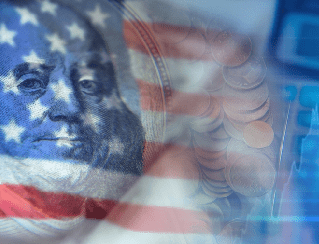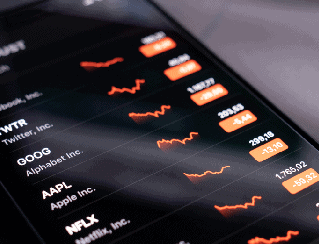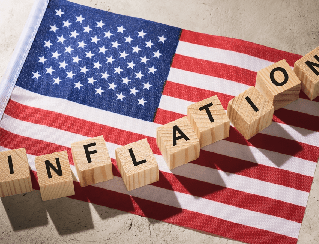US stocks declined lower on Thursday, continuing their downside momentum and dropping for a second day as Federal Reserve officials are likely to remain persistent in their fight against inflation and warned of more pain to come. Fed speakers in recent days have emphasized that they need to go further to extinguish price pressures.
Moreover, the renewed concerns related to the Ukraine-Russia war and the worsening coronavirus outbreak in China both weighed on investors’ moods. The country reports increased cases daily, which raised potential supply-chain issues for the global economy.
On the economic data, the US Weekly Initial Jobless Claims declined to 222K, which came in slightly better than the market expectation of 225K.
On the Eurozone side, the negative sentiment could be due to recent events in Polonia, as NATO believes Russia was responsible for the missile strike that targeted a Polish city, despite the missile presumably originating from Ukraine’s defence.

The benchmarks, S&P 500 and Dow Jones Industrial Average both edged lower on Thursday as the S&P 500 declined for the second straight session amid the souring market mood. The S&P 500 was down 0.3% daily and the Dow Jones Industrial Average was little changed with a 0.1% loss for the day. Eight out of eleven sectors in the S&P 500 stayed in negative territory as the Utility sector and the Consumer Discretionary sector are the worst performing among all groups, losing 1.79% and 1.27%, respectively. The Nasdaq 100 meanwhile retreated slightly with a 0.2% loss on Thursday and the MSCI World index was down 0.8% for the day.

Main Pairs Movement
The US dollar advanced higher on Thursday, regaining some upside traction and recovering some of the ground lost earlier in the week in the late US trading session as the market mood remained sour. Despite the latest second-tier data from the United States coming in mixed, the Federal Reserve policymakers’ resistance to reiterate the statements favouring the 50 bps rate hike in December helped the US Dollar to find demand.
GBP/USD declined lower on Thursday with a 0.42% loss as the cable witnessed fresh selling and retreated towards the 1.1780 mark after the UK budget and US data. On the UK front, the UK government presented a fiscal plan, which presented an increase in taxes of £55 billion and spending cuts to restore the UK’s fiscal reputation. Meanwhile, EUR/USD retreated slightly from a daily high and finished the day in the 1.0360 price zone amid a stronger US dollar across the board. The pair was down almost 0.32% for the day.
Gold declined lower with a 0.76% loss for the day after extending the intra-day slide towards a daily low around the $1758 area during the US trading session, as Federal Reserve talks, Russia-Ukraine tussles and Covid woes both favoured the greenback. Meanwhile, WTI Oil dropped sharply with a 4.62% loss for the day.
Technical Analysis
EURUSD (4-Hour Chart)

The EURUSD continued to edge lower and traded deep in negative territory slightly above the 1.0300 level as of writing. As the market sentiment keeps undermining, helping the safe-haven greenback gather strength on Thursday and weighing on the euro. Geopolitical tensions and concerns about global economic setbacks came back to fashion this week, and weight on stock markets. The US Dollar is showing signs of responding to risk-off flows, although its gains are limited, as US Treasury yields are seeing limited activity. The 10-year Treasury yields note hovers around 3.73%, roughly 50 bps below its year’s peak, while that on the 2-year note stands at 4.38%. In data-wise, the European Area released September Construction Output, which rose 0.1% MoM as anticipated. The Union’s Consumer Price Index was revised to 10.6% YoY in October, slightly below the preliminary estimate of 10.7%. The United States Initial Jobless Claims for the week printed 222K, a little lower than the estimate of 225K, and Building Permits in October reads 1.526M, compared to the consensus of 1.512M, which provides some support for the US Dollar.
From the technical perspective, the four-hour scale RSI indicator further declined to 54 figures as of writing, suggesting that the pair was confronting a corrective pullback. As for the Bollinger Bands, the EURUSD was pricing below the 20-period moving average and the size between upper and lower got closer, which is a signal that the pair move with small volatility. As a result, we think the pair would be put into sideway shortly.
Resistance: 1.0475, 1.0604
Support: 1.0298, 1.0167, 0.9953
GBPUSD (4-Hour Chart)

The GBPUSD stayed deep in red and traded below the 1.1780 level as of writing, as investors assess the UK’s Autumn Budget and the US Dollar managed to regather strength from the deteriorated market mood. While testifying before the UK Treasury Select Committee, Bank of England Governor Andrew Bailey said that they are likely to raise interest rates further. However, this comment failed to provide a boost to the Pound Sterling as Bailey also acknowledged they were seeing signs that the supply chain shock was starting to fade. Also, the Chancellor of the Exchequer, Jeremy Hunt presented the Autumn Statement, the budget of Prime Minister Rishi Sunak on Thursday. The budget was large as expected by analysts. Hunt presented an increase in taxes of £55 billion and spending cuts to restore the UK’s fiscal reputation after a chaotic September and October. On the data side, economic data from the US showed an unexpected decline in the Philly Fed to -19.4 in November from -8.7. Continuing Jobless Claims rose to the highest level since April. The US dollar initially dropped after the reports, but immediately rebounded sharply and reached a fresh daily high.
From the technical perspective, the four-hour scale RSI indicator retreated further to 53 figures as of writing, suggesting that the short-term upside traction faded. As for the Bollinger Bands, the price was priced in the lower area and close to the 20-period moving average, indicating that the price now has no clear direction. Hence, we think the cables were likely getting into the consolidation phase in the near term.
Resistance: 1.2028, 1.2145
Support: 1.1742, 1.1633, 1.1365
XAUUSD (4-Hour Chart)

The XAUUSD extended its losses and eyeing a test of the weekly lows around $1753 marks, following hawkish Federal Reserve (Fed) commentary and a tranche of United States economic data released that underpinned the US Dollar. The risk sentiment shifted sour as Fed policymakers emphasized the need to tackle inflation, led by the St. Louis Fed President James Bullard. Bullar said that rates might be “sufficiently restrictive” at around 5% to 7% and called his colleagues to raise rates further if they’re to achieve the Fed’s 2% goal. On the data side, a busy economic calendar in the United States would entertain Gold traders, led by unemployment claims and housing data. Initial Jobless Claims for the week dropped to 222K, below estimates of 225K and the previous week’s 226K. Contrarily Continuing Claims rose 13K, to 1.51 million, increasing for the fifth straight week, an uptrend signing that Americans are out of work for longer. Furthermore, a jump in US Treasury bond yields weighed on the yellow metal. The US 10-year Treasury bond yield jumps 9 bps to 3.781%, acting as a headwind for the non-yielding yellow metal.
From the technical perspective, the four-hour scale RSI indicator dropped deeper to 50 figures as of writing, suggesting that the gold was confronting a corrective pullback. As for the Bollinger Bands, XAUUSD was pricing below the 20-period moving average with low volatility. As a result, we think the pullback is to store the strength for the next rally, and the pair was more favoured to move with low volatility in the near term.
Resistance: 1800
Support: 1748, 1704, 1670
Economic Data
| Currency | Data | Time (GMT + 8) | Forecast |
| GBP | Retail Sales (MoM) (Oct) | 15:00 | 0.3% |
| EUR | ECB President Lagarde Speaks | 16:30 | |
| USD | Existing Home Sales (Oct) | 23:00 | 4.38M |










































